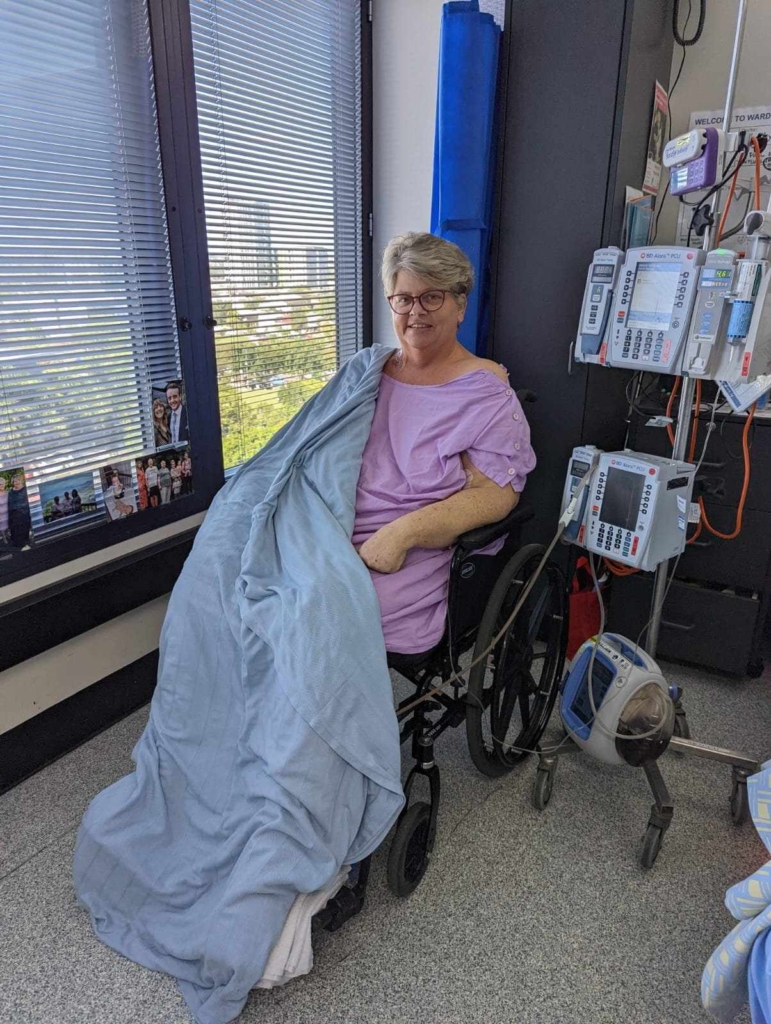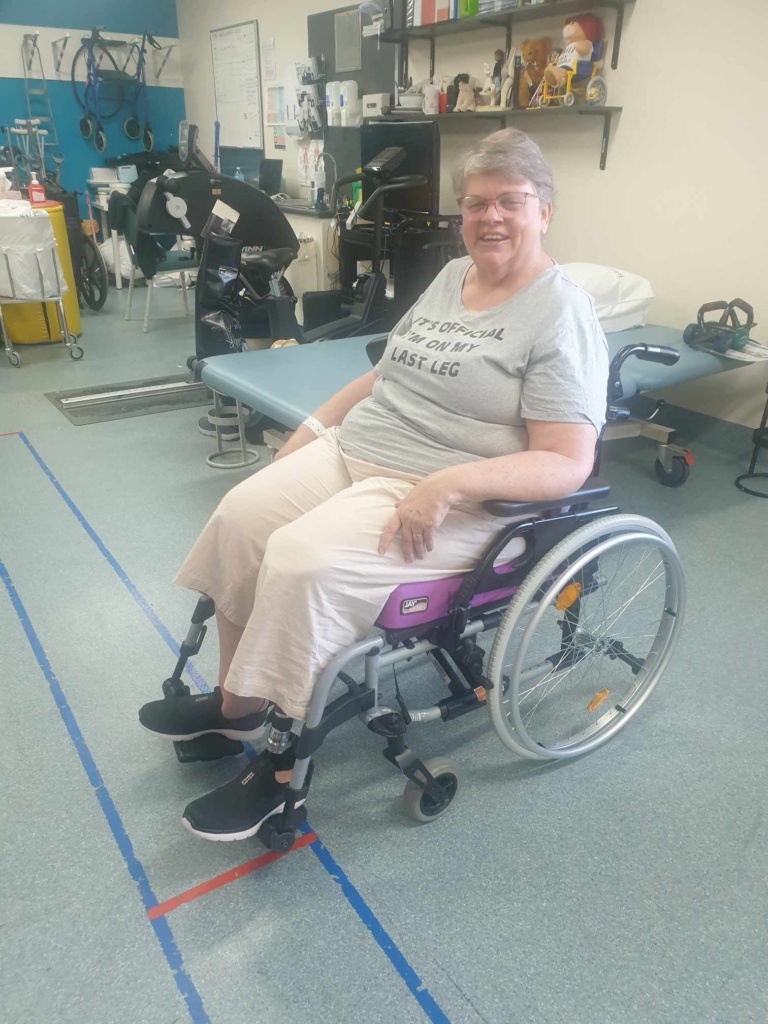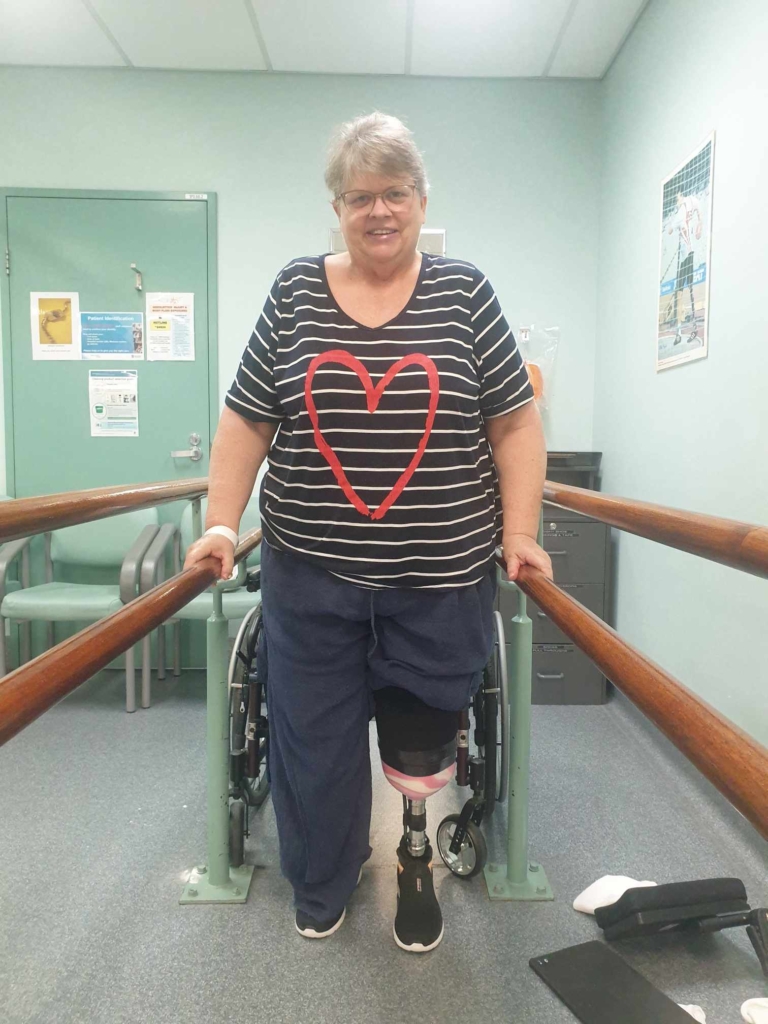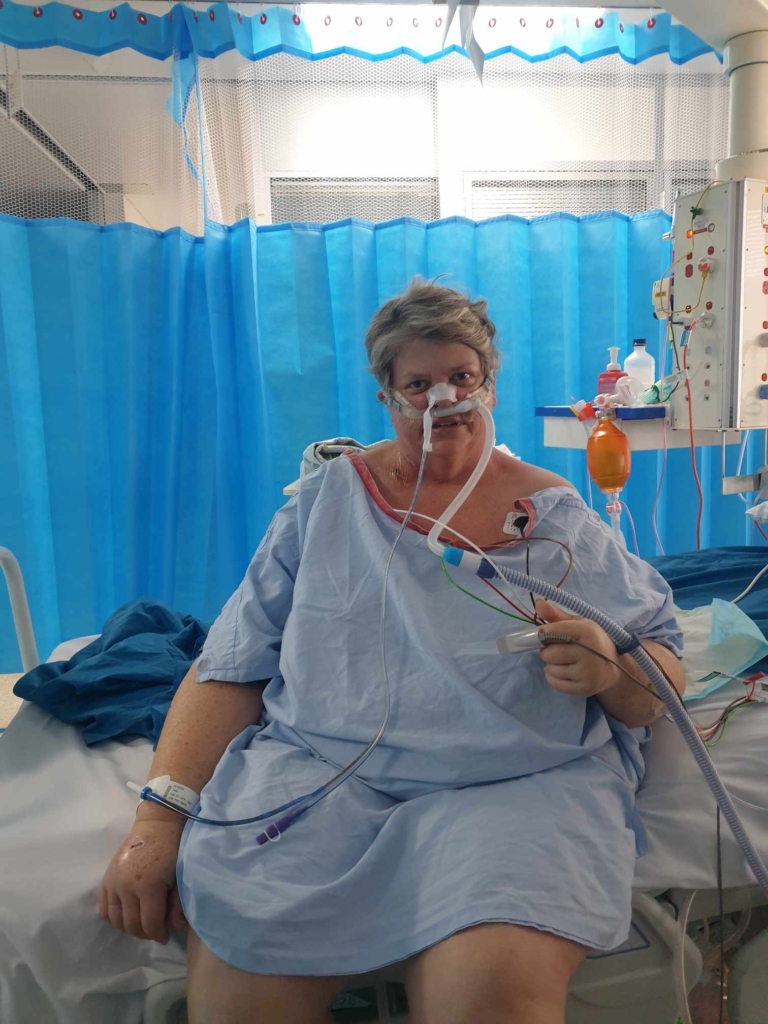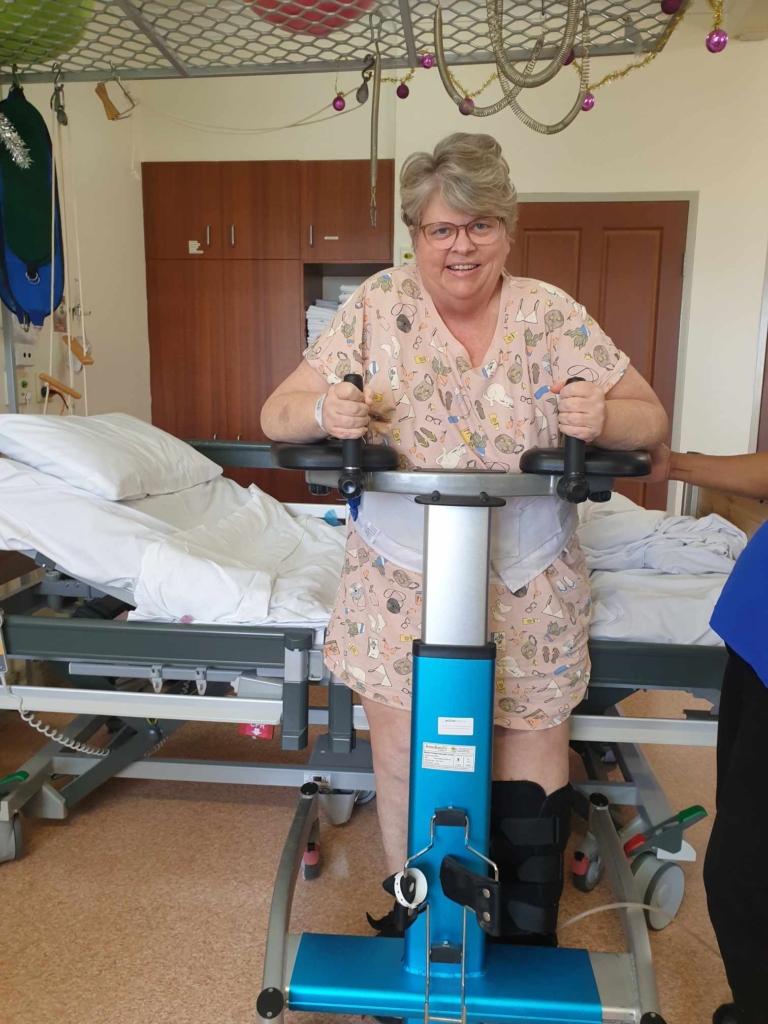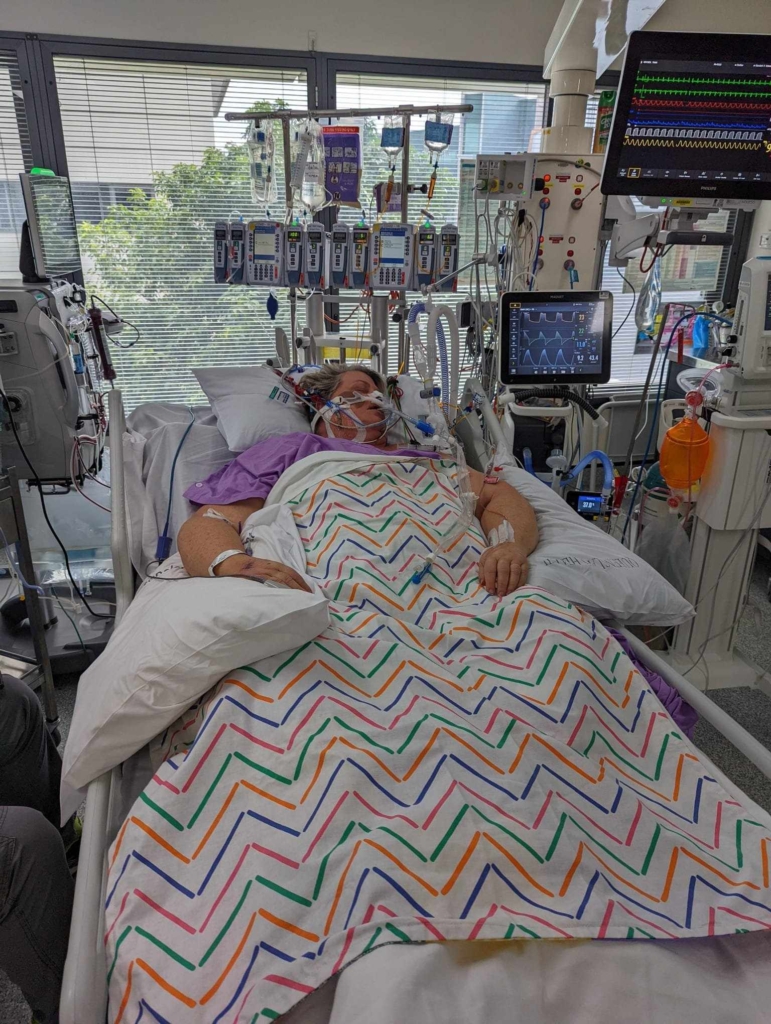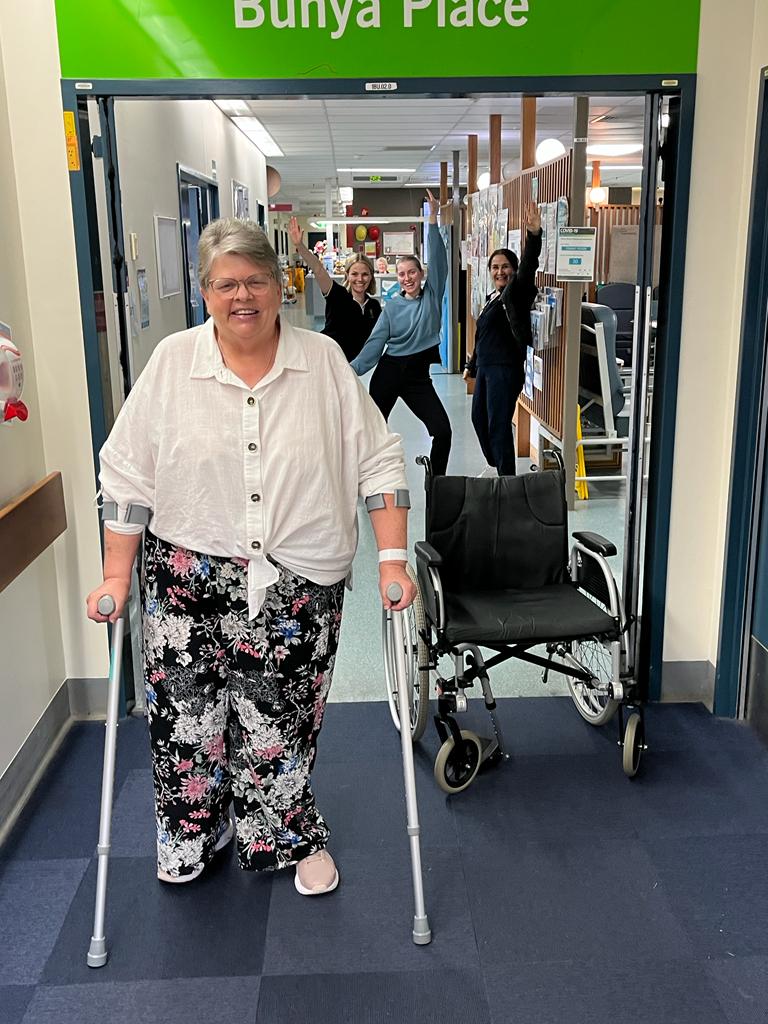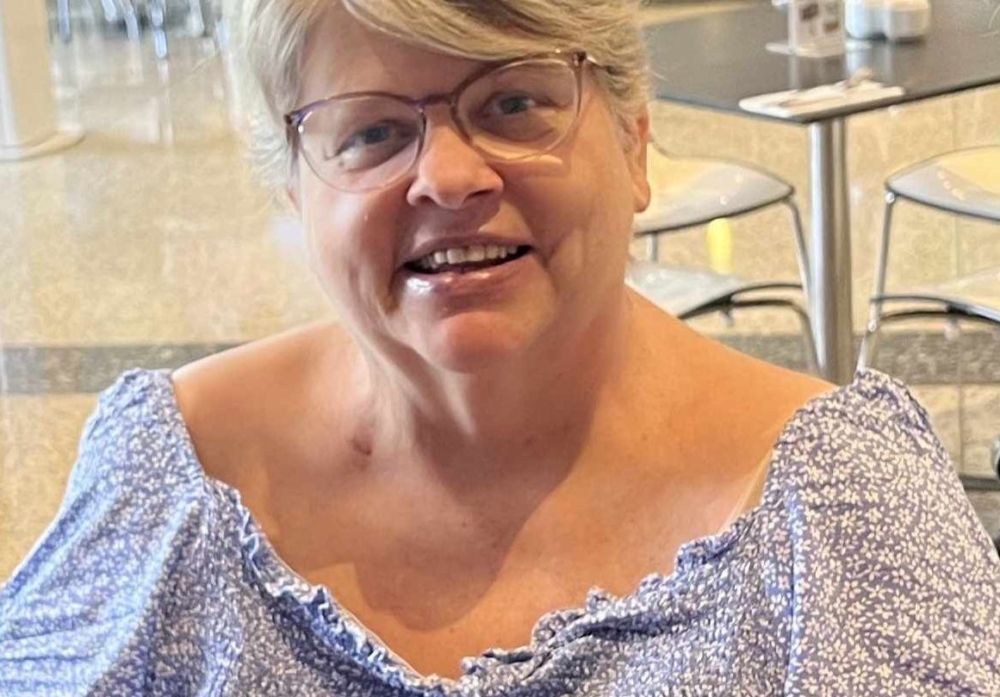On the 28th of September 2022, at the age of 59, my life in Brisbane QLD took a drastic turn for the worse. I had a throat virus a few days before and wasn’t feeling great, but I didn’t think it was serious. Each day, I felt worse, experiencing diarrhea and fluctuating temperatures. On the 27th of September, I went to a local GP, who said it was a virus and gave me a pathology form for swabs. Feeling quite sick, I decided to rest and get the swabs done the next day. My knowledge of Sepsis was limited, and the question “could it be Sepsis?” never occurred to me.
The next morning, I woke up struggling to breathe and told my husband to call an ambulance. He saw my lips turning blue and called immediately. Thankfully, the ambulance arrived within fifteen minutes, followed by two critical paramedics who recognized my sepsis symptoms. They started an antibiotic drip right away, which the ICU doctors later told me probably saved my life.
I was taken to emergency at the Princess Alexandra Hospital in Brisbane. Still fully conscious, I tried convincing myself it wasn’t serious. However, after being assessed, I was sent to ICU and put in an induced coma for two and a half weeks. My family was told that I had sepsis and that all my organs were shutting down. My daughter, living in London, rushed back home, and my youngest sister came immediately from Mackay.
During the two and a half weeks I was in a coma, my husband, son, daughter, two sisters, extended family, and friends experienced unimaginable trauma, uncertain if I would recover and what my life would be like if I did. My organs were failing due to the infection, and the ICU doctors prescribed many medications, including trial drugs. My husband received phone calls during the night from doctors asking him to make serious decisions regarding my treatment. I required dialysis because my kidneys weren’t functioning due to sepsis.
I had gone from leading a perfectly active life with a loving family, including three beautiful grandsons, my own bookkeeping business, lots of travel, and a very social network of friends, to being extremely weak, unable to talk, and struggling to move. Each family member played a vital role in my recovery, talking and encouraging me while I was in a coma. This illness showed me that the love and support of family and friends is the most important thing, and I couldn’t have survived without it. It also taught me the importance of asking the question, “could it be sepsis?”
The next ten months in the hospital were a major challenge, involving regaining my strength and recovering from sepsis to return to my life. The major issue was an ankle injury I had before developing sepsis, which succumbed to infection. While in a coma, I had three operations on my ankle to cut away the infection, and another one after coming out of the coma. Bedbound due to the wound and too weak to stand, I required dialysis for my kidneys.
The care I received from the ICU doctors and nurses at the PA Hospital was absolutely amazing. I spent nearly four weeks in ICU before being transferred to the renal ward for dialysis and rehabilitation. The staff at the PA Hospital did everything they could to help me, and I was moved to Canossa Hospital in Oxley for four months of rehabilitation, including Christmas 2022. The doctors, nurses, and physio staff were great, making my life in hospital as comfortable as possible. I was able to leave the hospital for a few hours on Christmas Day to celebrate with my family, lifting my spirits and making me more determined to get better.
During the ten months in the hospital, my family and friends continued to visit and support me in my rehabilitation, which meant the world to me. Visits from my three grandsons were special, and in May 2023, while I was still in the hospital, my granddaughter was born, bringing me great joy and strength to continue my rehabilitation.
In February 2023, I faced a new challenge. After four months of treatment, the plastic surgeons explained that my ankle wound wasn’t healing as expected and would require several operations, involving twelve months in the hospital with uncertain results. The other option was to amputate my left lower leg and aim for a prosthetic leg, taking five to six months in the hospital. With my family’s support, I chose the amputation option. Once the operation was completed, I felt stronger and healthier as my body no longer had to fight the infection in my ankle.
The next five months in Bunya Ward, an amputee rehabilitation center at the PA Hospital, were challenging. I started losing some hair from the effects of the operations but was determined to build my strength to use a prosthetic leg. The staff, including doctors, nurses, physios, occupational therapists, and prosthetists, motivated me and helped me achieve this goal. My experience in the ward was very positive, resulting in me getting a prosthetic leg in June 2023. Two wonderful amputee specialist physios provided care, encouragement, and humour, building my physical and emotional strength and helping me return to the life I enjoyed before sepsis.
On the 21st of July 2023, I left the hospital, a joyous day. Life after sepsis is different, with a new appreciation for being alive and spending time with my family and friends. I try not to sweat the small stuff and enjoy creating new memories, especially with my grandchildren who see life simply and make me laugh a lot. The love and support from my family have made me feel extremely loved and given me a positive attitude. This experience has made me determined to spread the message that sepsis is a deadly condition and needs more awareness. That is why I am telling my story.
